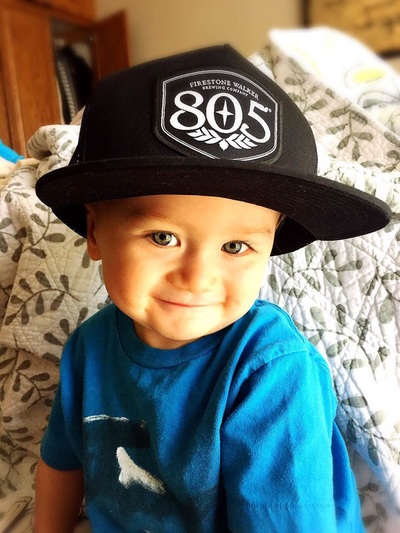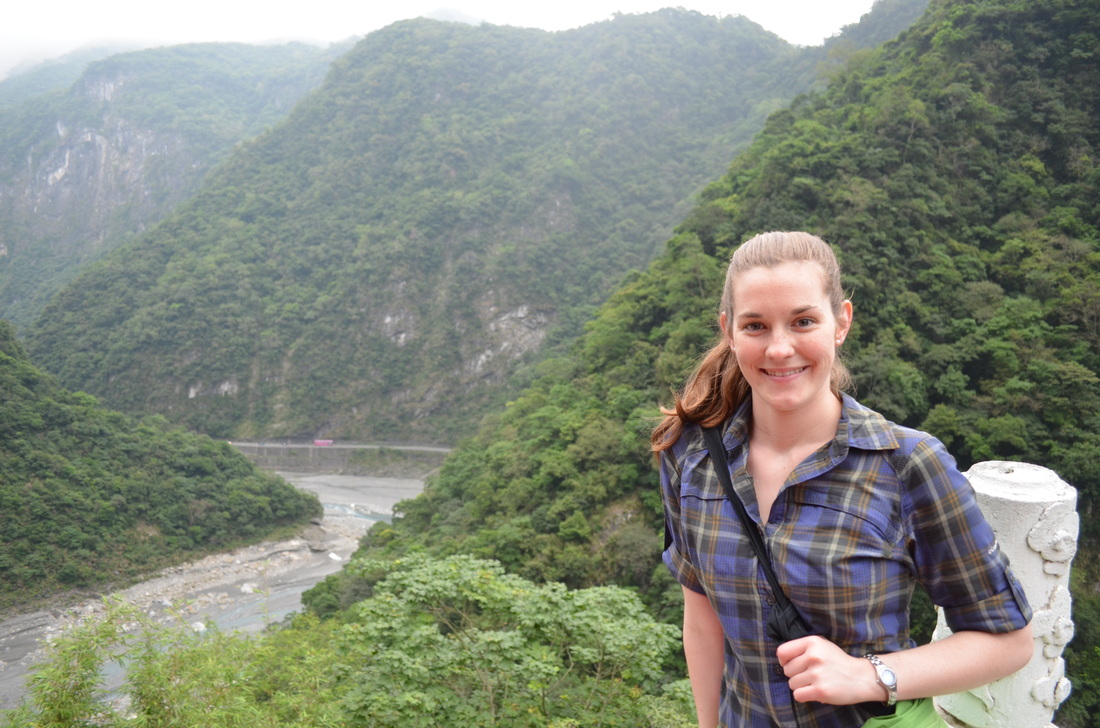I saw several big glaciers during my time in Alaska this past summer, but none of them came close to being as impressive as Perito Moreno. Perito Moreno is 97 square miles of ice with a length of 19 miles. It is massive! It connects to the Southern Patagonian Ice Field, which is the third largest in the world. I was wrong in my Chalten post when I said it was the second largest. Greenland and Antarctica are both larger. The face of the glacier is about 3 miles wide with an average height of 240 feet. It is one of only three glaciers in Patagonia that is growing. This growth causes an ice bridge to be formed between the glacier and a section of land that jets out into the lake. This ice bridge acts as a dam in Largo Argentino or Lake Argentina (largest lake in Argentina). The section of the lake that is dammed is called Brazo Rico. As the water level rises in Brazo Rico, pressure mounts and eventually the ice bridge ruptures and collapses in a dramatic and theatrical event. For decades this rupturing event occurred every four to five years. Now it is becoming more random and impossible to predict. It used to be that tourists would flood in during the assumed rupturing period with hopes of being lucky enough to catch the big show. There were even constant news feeds of the glacier with the hope that viewers at home could witness the event as well.
There are three options for viewing the glacier. One option is to pay 260 pesos (foreigners) just to get into the park plus the 300-400 pesos transit round trip. Once in, you can view the glacier from well -constructed balconies or platforms. The second option is to do the Mini-Trek, which places you on top of the glacier for an hour to an hour and a half. The third and best option is to do the Big Ice Trek, which is a 6 hour trek that puts you on top of the glacier for roughly 3.5 hours. We did the Big Ice Trek. It was expensive, but well worth the money. The morning started off with a 50 minute bus ride from Calafate to the balconies. We checked out the glacier from them and then boarded a boat to get right up next to the glacier. We trekked for about an hour along the edge of it so that we were closer to the middle. During the hike, we met four Americans. Two were ironically from Seattle and University of Washington graduates. Having graduated from Gonzaga University myself, we had a few choice comments to say about one another’s basketball teams. The other two were Villanova graduates and from the east coast.
I will allow the photos to give you a feel of our trek. It was phenomenal. We had to be careful walking on the inclines of the ice with the crampons, but otherwise we were fully absorbed in our surroundings. Our guide explained that Perito Moreno is a temperate glacier opposed to those of Antarctica and Greenland. That basically means that the temperature of the area is substantially lower. He also shared that it takes roughly 400 years for the ice to move from the back of the glacier to the front. It is one of the only glaciers that isn’t growing or shrinking. The guides answered some of our questions in regards to their lifestyle. They seem to really love their work. They do the Big Ice Trek 2 to 3 times a week and usually the Mini-Trek 2 times. Most of them spend the spring and summer in Calafate guiding tours on the glaciers and the rest of the year in Chalten guiding hikes around Fitz Roy. The training to become a mountain guide is intensive and requires 3 years of schooling. Don’t worry Mom, I love trekking, but don’t foresee a career leap into that field.
The next day I was picked up bright and early to head out for a boat tour of the remaining two glaciers, Upsala and Spegazzini. According to the loudspeaker of the boat, Upsala is 3 times the size of Buenos Aires. Obviously there are a few problems with this fact, but it paints the picture of how huge this glacier is. It is the widest glacier in the country. Due to its size it was used by the air force to prepare for missions to Antarctica. Like Perito Moreno, Upsala flows into Lago Argentino. We weren’t able to get that close to Upsala due to icebergs and that was very disappointing. I was able to get photos of some brilliantly blue icebergs from up close and person as seen above. We then visited the Spegazzini glacier. It is 2 to 3 times higher than Perito Moreno and definitely made the day worth the trip. It is a stunning glacier that runs down the side of a hill into the lake. I spent a good chunk of the day with an older woman from just outside of BA. She was patient with my slow and broken Spanish, but we were able to have roughly an hour conversation straight. She found me amusing because during the 40 minute trip from Upsala to Spegazzini, I stood at the front of the ship getting drenched. I was not going to lose my prime photo taking spot again (earlier in the day I shifted to sneeze and a family stole my spot). I pointed to the bar in front of her and said, “Tuo” and then pointed to the bar in front of me and said, “Mio”. If you are on a budget, I would recommend skipping the Upsala tour and putting all your money into the Big-Ice Trek.
Another awesome part of our time in Calafate was that yet again we were able to meet up with our Swiss friends, Martina and Raphael. Before heading to our hostel for an evening of taking advantage of actually having an oven, we shopped as a group. The people waiting in line behind us were very confused about our nationalities. Martina and Raphael spoke Swiss German to each other, all four of us spoke English with one another, and Nico spoke Castellano to the clerk. In order to use his credit card he had to hand the man his Argentinian ID. This made the two elderly Argentinian women behind us drop their jaws. They whispered something of the nature, “He is Argentinian? Strange… Didn’t you think he was American?” Nico made milanesa for the first time (the day previously I gave empanadas a whirl and they were actually good) and we all chowed down. While eating, we were disturbed and entertained by the slightly nutty cleaning lady. She prepared chicken for the following day by slapping all the raw meat down on the kitchen table. She didn’t use a plate, pan or cutting board. It definitely made us rethink consuming our breakfast there. Yet again our goodbyes wouldn’t be for long. We still had two meet-ups ahead of us.
Come to Calafate and enjoy the glaciers. Just make sure you prepare your checkbook the area is impressively expensive. If it is feasible for you to do this region by car, do it! A car would allow you to avoid the overpriced transit cost of the buses.
There are three options for viewing the glacier. One option is to pay 260 pesos (foreigners) just to get into the park plus the 300-400 pesos transit round trip. Once in, you can view the glacier from well -constructed balconies or platforms. The second option is to do the Mini-Trek, which places you on top of the glacier for an hour to an hour and a half. The third and best option is to do the Big Ice Trek, which is a 6 hour trek that puts you on top of the glacier for roughly 3.5 hours. We did the Big Ice Trek. It was expensive, but well worth the money. The morning started off with a 50 minute bus ride from Calafate to the balconies. We checked out the glacier from them and then boarded a boat to get right up next to the glacier. We trekked for about an hour along the edge of it so that we were closer to the middle. During the hike, we met four Americans. Two were ironically from Seattle and University of Washington graduates. Having graduated from Gonzaga University myself, we had a few choice comments to say about one another’s basketball teams. The other two were Villanova graduates and from the east coast.
I will allow the photos to give you a feel of our trek. It was phenomenal. We had to be careful walking on the inclines of the ice with the crampons, but otherwise we were fully absorbed in our surroundings. Our guide explained that Perito Moreno is a temperate glacier opposed to those of Antarctica and Greenland. That basically means that the temperature of the area is substantially lower. He also shared that it takes roughly 400 years for the ice to move from the back of the glacier to the front. It is one of the only glaciers that isn’t growing or shrinking. The guides answered some of our questions in regards to their lifestyle. They seem to really love their work. They do the Big Ice Trek 2 to 3 times a week and usually the Mini-Trek 2 times. Most of them spend the spring and summer in Calafate guiding tours on the glaciers and the rest of the year in Chalten guiding hikes around Fitz Roy. The training to become a mountain guide is intensive and requires 3 years of schooling. Don’t worry Mom, I love trekking, but don’t foresee a career leap into that field.
The next day I was picked up bright and early to head out for a boat tour of the remaining two glaciers, Upsala and Spegazzini. According to the loudspeaker of the boat, Upsala is 3 times the size of Buenos Aires. Obviously there are a few problems with this fact, but it paints the picture of how huge this glacier is. It is the widest glacier in the country. Due to its size it was used by the air force to prepare for missions to Antarctica. Like Perito Moreno, Upsala flows into Lago Argentino. We weren’t able to get that close to Upsala due to icebergs and that was very disappointing. I was able to get photos of some brilliantly blue icebergs from up close and person as seen above. We then visited the Spegazzini glacier. It is 2 to 3 times higher than Perito Moreno and definitely made the day worth the trip. It is a stunning glacier that runs down the side of a hill into the lake. I spent a good chunk of the day with an older woman from just outside of BA. She was patient with my slow and broken Spanish, but we were able to have roughly an hour conversation straight. She found me amusing because during the 40 minute trip from Upsala to Spegazzini, I stood at the front of the ship getting drenched. I was not going to lose my prime photo taking spot again (earlier in the day I shifted to sneeze and a family stole my spot). I pointed to the bar in front of her and said, “Tuo” and then pointed to the bar in front of me and said, “Mio”. If you are on a budget, I would recommend skipping the Upsala tour and putting all your money into the Big-Ice Trek.
Another awesome part of our time in Calafate was that yet again we were able to meet up with our Swiss friends, Martina and Raphael. Before heading to our hostel for an evening of taking advantage of actually having an oven, we shopped as a group. The people waiting in line behind us were very confused about our nationalities. Martina and Raphael spoke Swiss German to each other, all four of us spoke English with one another, and Nico spoke Castellano to the clerk. In order to use his credit card he had to hand the man his Argentinian ID. This made the two elderly Argentinian women behind us drop their jaws. They whispered something of the nature, “He is Argentinian? Strange… Didn’t you think he was American?” Nico made milanesa for the first time (the day previously I gave empanadas a whirl and they were actually good) and we all chowed down. While eating, we were disturbed and entertained by the slightly nutty cleaning lady. She prepared chicken for the following day by slapping all the raw meat down on the kitchen table. She didn’t use a plate, pan or cutting board. It definitely made us rethink consuming our breakfast there. Yet again our goodbyes wouldn’t be for long. We still had two meet-ups ahead of us.
Come to Calafate and enjoy the glaciers. Just make sure you prepare your checkbook the area is impressively expensive. If it is feasible for you to do this region by car, do it! A car would allow you to avoid the overpriced transit cost of the buses.




